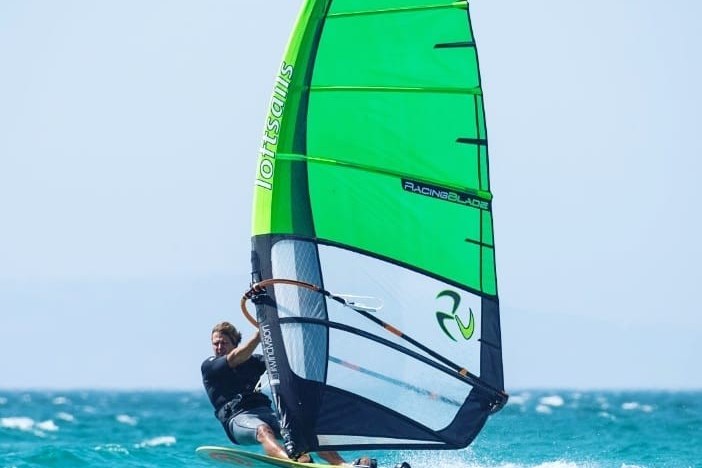Carbon fiber windsurf fin incorporates Sicomin bio-based epoxy resin
Sicomin GreenPoxy 33 meets high-performance windsurfing fins requirements, accommodating significant loads, high torsion stiffness and flexibility.

Photo Credit: Sicomin
It was reported on Nov. 30 that Sicomin (Châteauneuf les Martigues, France), has collaborated with Sonntag Fins to incorporate its GreenPoxy 33 bio-based epoxy resin into the development of Sonntag’s custom carbon fiber windsurf fins. Targeted at windsurf slalom sailors, racers and speed sailors, the bespoke product ensures speed, fatigue performance and sustainability.
Placing emphasize on the importance of performance and consistency of the raw materials used for the product, Sonntag Fins originally approached Sicomin’s German distributor, Time Out Composite, for a new resin system that could reduce cycle times and improve manufacturing output. Bio-based systems were discussed, but the first product used by Sonntag was Sicomin’s SR1280 laminating system which reportedly delivered immediate results, enabling shorter cure cycles and is said to have exceeded all of the previous mechanical test targets.
Sonntag and Time Out Composite revisited the topic of a more sustainable epoxy resin system in August 2020, and, after settling on GreenPoxy 33, performed a series of tests. According to Sicomin, test fins produced with the new material performed well in production trials. Pure resin samples were also tested and post-cured at 140 ̊C, and indicated significantly higher elongation at maximum resistance, meaning the cured epoxy was less brittle and susceptible to damage should a customer’s fin meet a rock.

Photo Credit: Sicomin
Sonntag fins are manufactured in CNC-machined aluminium molds using the GreenPoxy 33 resin and a bespoke layup of woven, stitched biaxial and heat-set unidirectional (UD) carbon fiber fabrics in four steps. First, Sonntag’s green in-mold coating is applied. Individual fabric plies, cut using precisely-machined templates, are then placed into the mold and wetout with the epoxy. With the laminate stack complete, the mold is closed and loaded into a heated press for around two hours for curing and consolidation. After curing, the demolded fins are tempered in an oven at 140 ̊C, and lightly sanded. Finally, the fins are cut to the required length and the base adapter is molded to the epoxy-carbon blade in a specific mold.
With each fin being optimized for its rider, Sonntag says it is critical that each piece produced will bend and twist in exactly the way it has been designed to do so, providing the rider with the exact feel and feedback they want for their board and fin. Each Sonntag fin is tested on its company-developed CNC controlled servo and stepper motor driven test bench, building a database of test results that ensures the products perform as designed and validates the consistency of the manufacturing process and raw materials.
“We produce high-performance windsurfing fins that need to accommodate significant loads during sailing. Fins need to combine flexibility with extremely high torsion stiffness that places high interlaminar shear forces on the resin, especially in our softer fins,” comments Joerg Sonntag, MD, Sonntag Fins. “A key requirement for us is a resin that maintains its mechanical properties for many years, and this is where the Sicomin systems deliver.”
Related Content
-
Braskem demonstrates PP solutions using Weav3D composite lattice technology
Partnership combines Braskem’s polypropylene sheets with Weav3D Rebar for Plastics technology to address new structural, automotive applications requiring high-strength, lightweight material solutions.
-
3D weaving capabilities achieve complex shapes, reduce weight and cost
JEC World 2024: Bally Ribbon Mills is displaying film-infused 3D woven joints, woven thermal protection systems (TPS) and woven composite 3D structures.
-
PEEK vs. PEKK vs. PAEK and continuous compression molding
Suppliers of thermoplastics and carbon fiber chime in regarding PEEK vs. PEKK, and now PAEK, as well as in-situ consolidation — the supply chain for thermoplastic tape composites continues to evolve.
















